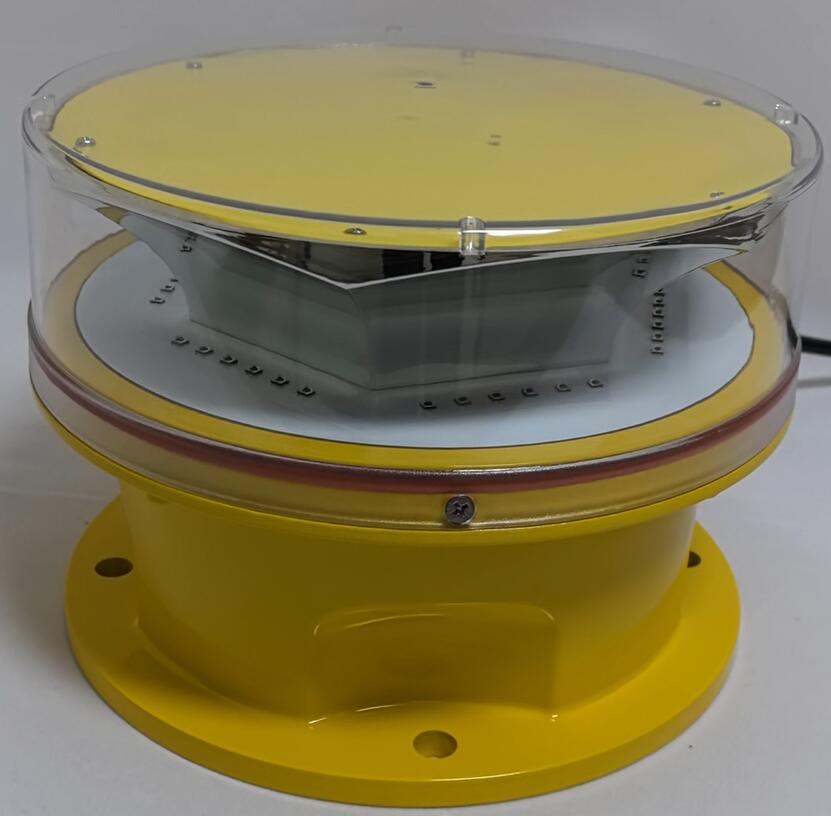In the realm of aviation, where the skies are a vast canvas of movement and possibility, there exist silent yet crucial elements that ensure the safety of flights – aviation red obstruction lights. These unassuming beacons play a vital role in guiding pilots and safeguarding the integrity of air travel.
Aviation red obstruction lights are designed to mark tall structures that could pose a potential hazard to passing aircraft. From towering skyscrapers in bustling cities to lofty communication towers in remote areas, these lights serve as a visible warning to pilots, alerting them to the presence of obstacles in their flight path. The distinct red hue is highly visible and easily distinguishable against the backdrop of the sky, even from a great distance.
One of the key features of aviation red obstruction lights is their durability. Built to withstand the harshest of environmental conditions, these lights must be able to endure strong winds, heavy rain, snow, and extreme temperatures. They are constructed with high-quality materials and advanced engineering techniques to ensure reliable performance and longevity. This durability is essential, as any failure in these lights could have disastrous consequences for aviation safety.
The technology behind aviation red obstruction lights has evolved significantly over the years. Today, many of these lights are equipped with advanced LED (Light Emitting Diode) technology, which offers several advantages over traditional light sources. LEDs are highly energy-efficient, consuming less power while providing a brighter and more consistent light output. They also have a longer lifespan, reducing the need for frequent replacements and maintenance. Additionally, LED lights can be programmed to flash or strobe in specific patterns, further enhancing their visibility and effectiveness as obstruction markers.

In addition to their practical function, aviation red obstruction lights also have an aesthetic appeal. At night, when illuminated, these lights create a beautiful and mesmerizing sight, adding to the charm of the urban skyline or the natural landscape. They can be a source of inspiration for photographers, artists, and anyone who appreciates the beauty of the night sky.
However, the importance of aviation red obstruction lights goes beyond their visual impact. These lights are a critical part of the aviation safety infrastructure, helping to prevent collisions between aircraft and tall structures. Pilots rely on these lights to navigate safely through the airspace, and air traffic controllers use them to monitor and manage air traffic flow. Without proper obstruction lighting, the risk of accidents and incidents would be significantly increased, endangering the lives of passengers and crew.
| aviation red obstruction lights | S4DC | DC23 |
| 4446 | FR5 | 23 |
To ensure the effectiveness of aviation red obstruction lights, strict regulations and standards are in place. These regulations govern the placement, intensity, and visibility of the lights, as well as their maintenance and inspection requirements. Property owners and operators of tall structures are responsible for ensuring that their obstruction lights are in compliance with these regulations, and failure to do so can result in fines and penalties.
Regular inspections and maintenance are essential to keep aviation red obstruction lights in optimal working condition. This includes checking for damaged or malfunctioning bulbs, ensuring proper alignment and orientation, and verifying that the power supply is stable. Any issues with the lights should be addressed promptly to ensure their continued effectiveness as safety markers.
In conclusion, aviation red obstruction lights are an integral part of the aviation ecosystem. They serve as pointers in the sky, guiding pilots and safeguarding the safety of flights. With their durability, advanced technology, and aesthetic appeal, these lights play a vital role in ensuring the smooth and safe operation of the aviation industry. As we continue to rely on air travel for transportation and commerce, it is essential that we recognize the importance of aviation red obstruction lights and ensure that they are properly maintained and regulated. Let us appreciate these silent guardians of the skies for their crucial contribution to aviation safety.